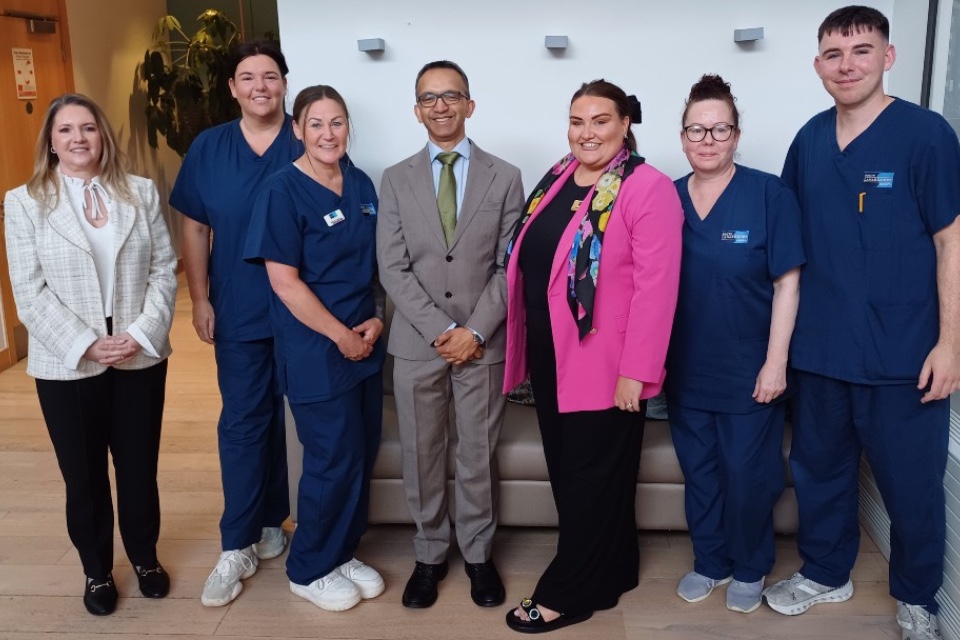Talent attraction and retention remains the top priority for leaders in the health and care sectors in the UK, according to a new report that finds 53% of organisations struggle to find enough permanent staff to fill all rostering requirements leaving staffing levels at breaking point.
Over half (60%) of senior health & care professionals said attracting and hiring enough appropriately qualified people was the number one challenge now according to Advanced’s Health & Care Trends Report 2023/24.
Again, more than half (52%) said that retaining staff at all levels was still a huge focus and 34% felt implementing more effective hiring and screening processes was still of huge importance.
The report found that the main retention challenge for senior leaders (58%) was around retaining staff, many of whom are leaving the sector for less demanding work. Forty-five per cent cited providing sufficient promotion opportunities to retain best staff, with 38% implementing effective performance management processes and 27% retaining older, experienced staff (consultants, GPs) seeking to retire early or reduce hours.
When asked about other barriers, over one in five (21%) said staff are working with outdated technology and processes that take too long, leading 54% of Health and Care professionals to say they have plans to upgrade their digital systems in 2024.
With new digital technology now at the forefront of conversations across all sectors, 19% of healthcare leaders say digital tools for faster and more accurate diagnosis will make the most impact in the future, while 18% cited technology that connects NHS providers more closely with ASC provision, aligning resource availability to reduce bed blocking. Other technological advancements that leaders believe would make a significant impact include:-
- 17% said they want more digital tools to help patients/clients manage long term, chronic conditions at home.
- 15% said that integrated data will allow services to share information for more effective future planning based on actual, local need.
- 12% believe digital tools would enable more efficient triaging and prioritising of care, AI & VR for enhanced medical and organisational management training.
- 9% said an online platform would increase capacity for more remote consultations and appointments.
In 2023, the report found that 38% of organisations were using automation in many areas of non-patient facing processes such as updating records, analysis of patient info for trends, HR processes and finance. It also showed that 25% were using automation in many areas including patient facing processes such as telephone answering and automated emails, 21% were using it in some management processes such as HR and finance, and 16% were not using to any noticeable extent.
Senior leaders were also asked in what ways they believed automation could make the biggest improvements to processes, to which the top five answers were:-
- 46% said it saves patient time, reducing frustration.
- 44% said it saves staff time, enabling focus on higher value tasks.
- 42% told us it helps build useful database for better future planning and provision.
- 40% said it saves time for diagnosis/treatment, increasing success rates for better outcomes.
- 36% said it would facilitate communication with patients with access issues.
These challenges have left care providers calling for more government support, with 60% saying government policy could help alleviate staffing issues with an increase in pay for all employees, while 54% believe the introduction of more specific benefits such as tax incentives for health and care staff would help and 41% believe there should be an increase in pay at entry level and low levels.
“We commissioned this report for the second year running to gain insight into the challenges facing the care sector and to understand if they have moved on at all and what still needs to be done to solve them,” said Ric Thompson, MD, Health and Care, at Advanced. “These results clearly demonstrate that the sector still needs a lot of support in managing and maintaining the quality of its most vital asset, its workforce, in order to gain better control of their organisations through a much more detailed and granular view of data – freeing up more time of managers and staff to deal with the more pressing and urgent issues, and of course patient care.”
“The pressures on healthcare delivery and care provision go hand-in-hand,” Professor Martin Green OBE, Chief Executive, Care England comments. “Despite a net reduction of 13,000 vacancies in the care sector across 2022 – 2023, we have lost 57,000 domestic workers which simply isn’t sustainable. It is vital that we give these sectors all the tools necessary to retain and attract the best people in order to look after some of the most vulnerable in society while making sure those doing the job feel better prepared and cared for too.”
Photo by krakenimages on Unsplash






